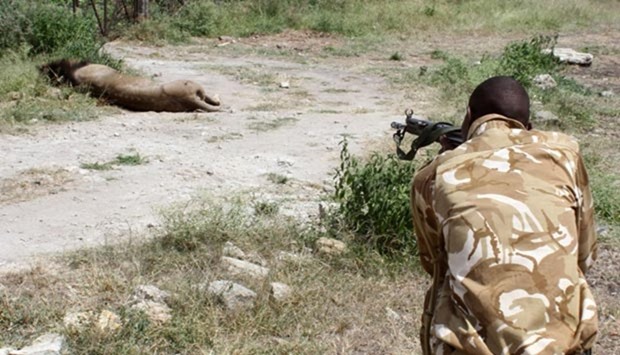A new road and railway project cutting through an inner city Nairobi nature reserve poses increased risks to wildlife, livestock and human beings, conservationists said, after two lions were killed this week in the space of just 48 hours.
Kenyan wildlife rangers shot dead a male lion named "Mohawk" on Wednesday after it strayed from Nairobi National Park and attacked and injured a local resident.
The next day, following a helicopter and ground search, rangers found the body of another lion speared to death in a township to the south of Nairobi.
Conservationists said construction work on the new road which will link Nairobi airport to the city centre was affecting animal behaviour and leading more big cats to attempt to break free in search of quieter hunting grounds.
"Before construction started in the park the lions were not escaping, so there are indications that the noise and blasting is affecting their movements," said Robert Ndetei, species conservation manager at World Wildlife Fund's Nairobi office.
"If you don't plan properly, if you don't do proper environmental impact assessments, then you are doomed to fail and at the Nairobi National Park this could lead to more lions and other animals coming into contact with a growing human presence," Ndetei told Reuters.
Nairobi National Park is home to about 35 lions. There are about 2,000 remaining in the whole of Kenya.
A senior Kenyan Wildlife Service official told reporters that contractors working on the new road project had accidentally cut an electric fence on the park's boundary, giving the lions an escape route to find livestock.
"A key concern is that the developer is not taking proper care to ensure there is less disturbance of the habitat while also securing the perimeter fencing," said Lucy Waruingi, acting secretary to the Conservation Alliance of Kenya.
Human settlements and activity have long been encroaching on the Nairobi National Park, which was established in 1946 on the city limits and provides views of lions, giraffes, zebras and other wildlife against a backdrop of high-rise buildings.
Kenya's economy is expected to grow by 5.9% this year and by 6% in 2017, increasing pressure on the environment and exacerbating conflicts between humans and wildlife.
But wildlife tourism is also an essential foreign revenue earner for East Africa's largest economy.



